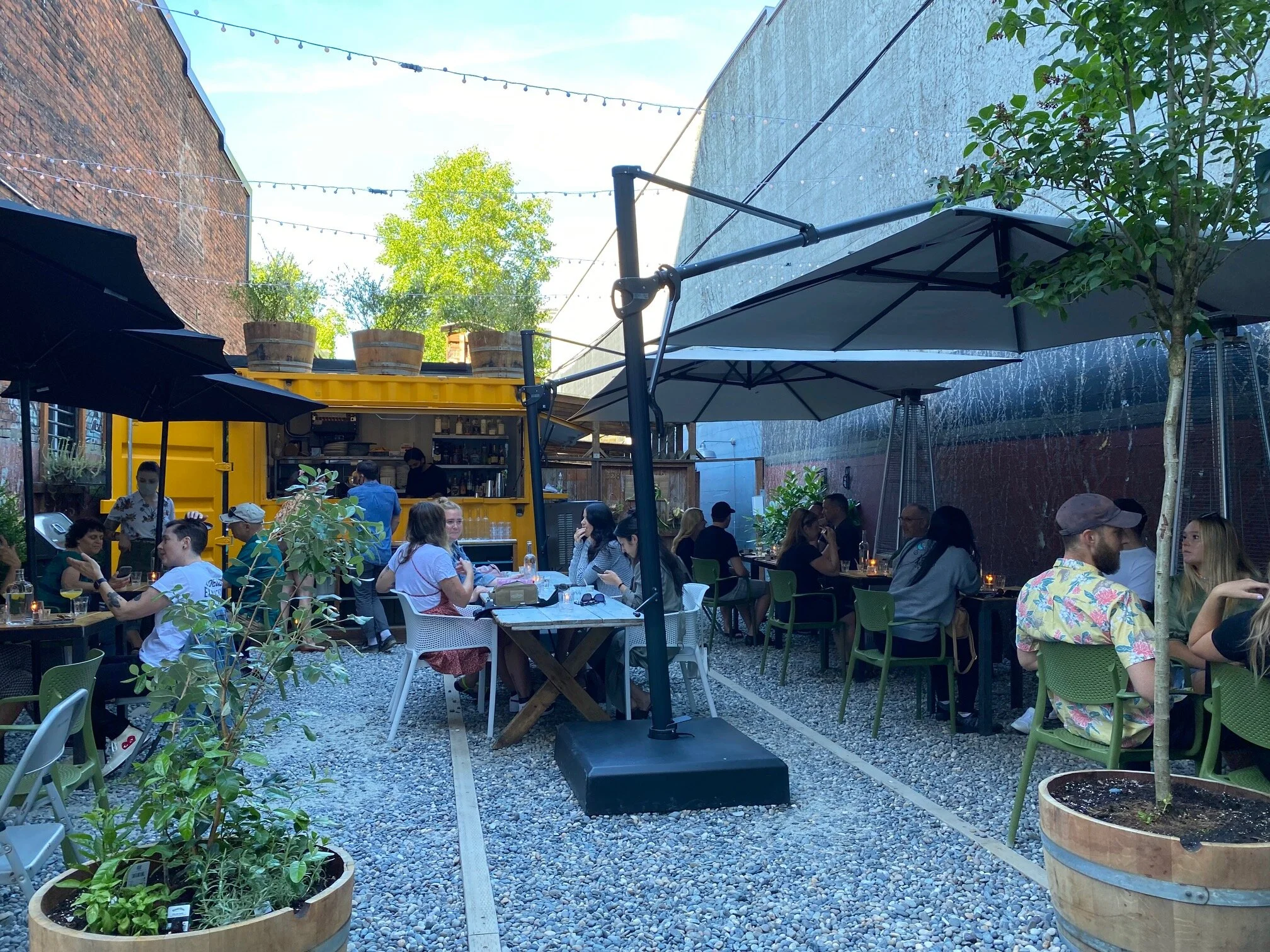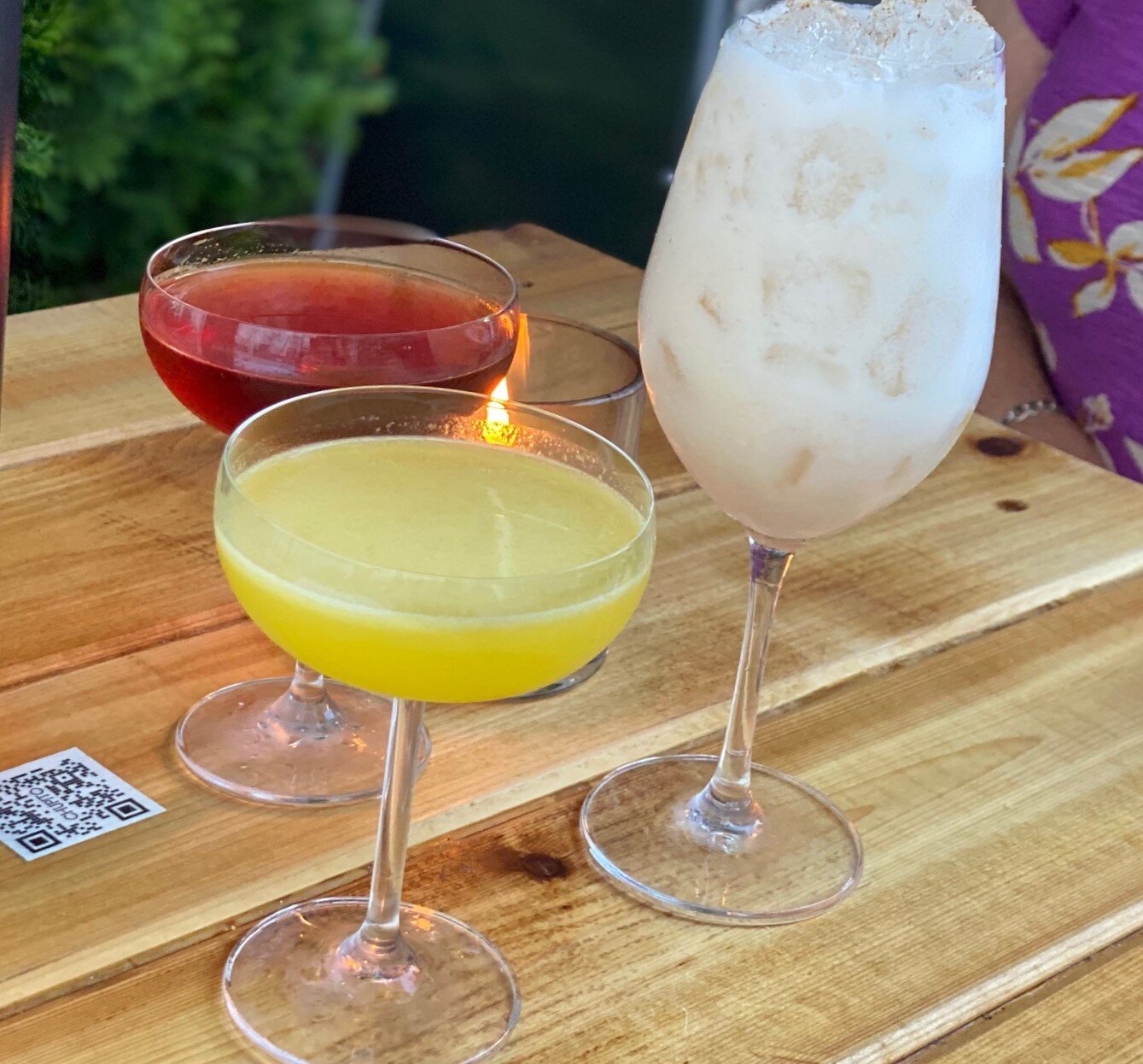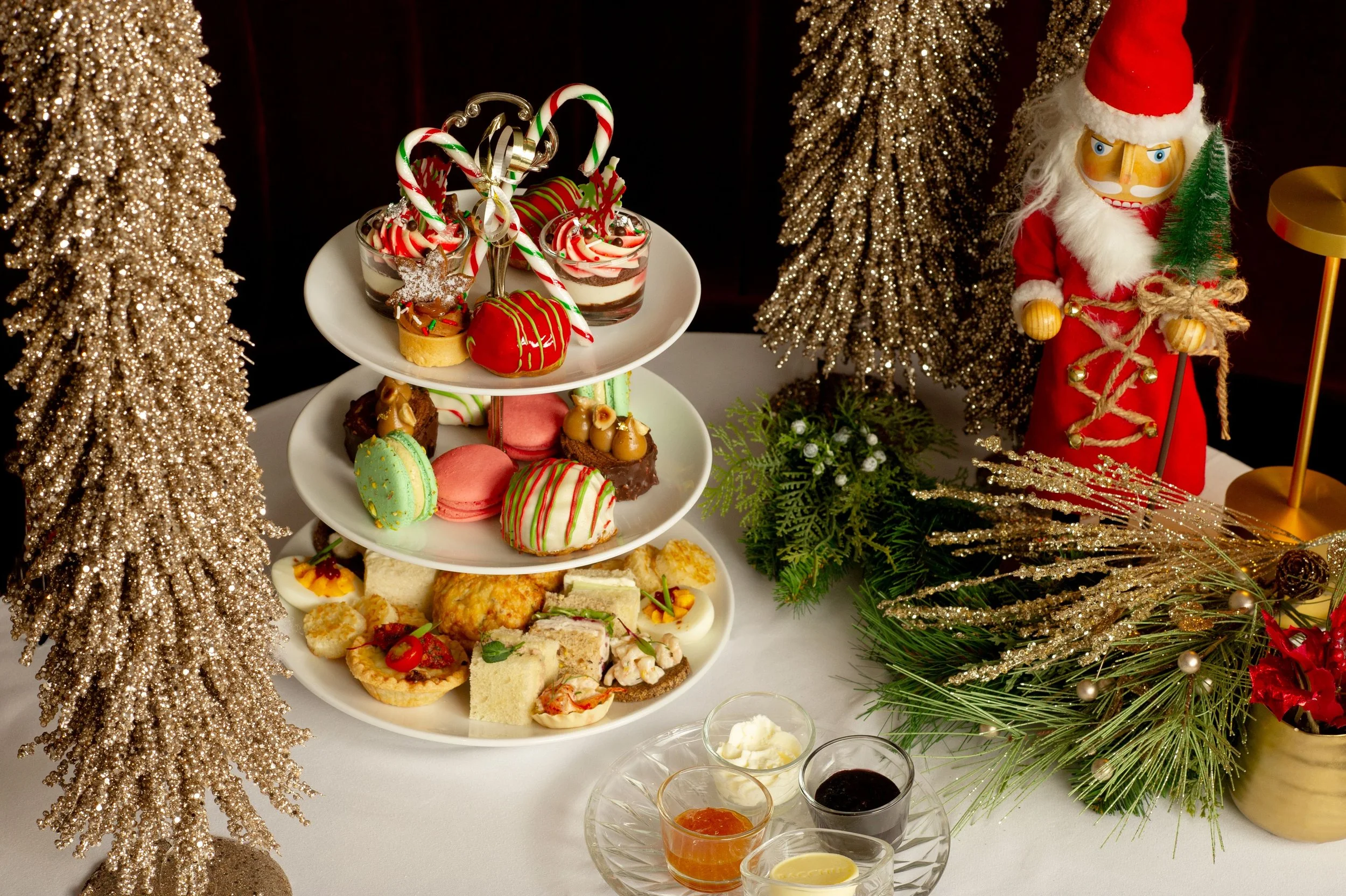Between two brick walls off a downtown Vancouver alleyway, Chupito is a love letter to Mexico
The new outdoor food and cocktail bar is inspired by the flavours of the Sinaloa coast
Tucked away off Hamilton Street, Chupito highlights ingredients that are indigenous to Mexico on its food and drink menus. Photo by Gail Johnson
THERE’S A NEW outdoor food and cocktail bar in Vancouver that’s unlike anything else in the city and is inspired by a love of Mexico—Sinaloa, a state in the country’s northwest, in particular.
You can’t see Chupito from the street; to access this urban gem a stone’s throw west from Victory Square, you need to head down the alley that runs from Hamilton Street to Homer. It’s behind the original location of its parent restaurant, La Taqueria, at 322 West Hastings.
Chupito means “shot” in Spanish. Photo by Gail Johnson
What was formerly an unused gravel space barely big enough to park two cars between two brick buildings has been transformed into a bustling courtyard complete with sun umbrellas and strings of patio lights. A decked-out eight-by-10-foot shipping container painted sunflower yellow is the shared space for the chef and bartender.
After you sit down, you’re greeted with the bar’s namesake: chupito means “shot” or small glass of alcohol. It might be the most darling margarita or other diminutive drink with a mini compostable straw; the refresher rotates daily, and there’s always a non-alcoholic option. “We want to offer a little welcome to make everyone feel connected as soon as they come in,” operating partner Tara Davies tells Stir.
Chupito is a passion project of Davies and Marcelo Ramirez (CEO and owner of Chupito, La Taqueria, and La Mezcaleria), friends turned business partners. “It was born from our love of cocktails and Sinaloa-style seafood as well as the forced need to be creative with space that our industry faced due to the pandemic,” Davies says. “He saw an opportunity to utilize an otherwise empty lot and turn it into a small oasis in hopes of creating an escape that many of us were needing after 2020.”
Davies lived in Mexico for six years in her early adulthood, in Guadalajara and Culiacán. The latter is the capital of the state of Sinaloa, which also comprises Mazatlán; if you go strictly by news headlines, it may be better known for its active and violent drug cartel. Davies got to know the many other sides to the territory that stretches along the Gulf of California and Pacific Ocean with beaches, mountains, and valleys.
“I fell in love with the culture, the people, the warmth, the cuisine, and the spirits,” Davies says. “There’s so much to love about Mexico. It’s the culture and traditions that stand out. I had grown up in a household that often hosted groups of over 20 people, including close family and friends, for every holiday imaginable. The dining experience in my family was always about more than just the food; it was about the connection. That was mirrored at almost every meal I enjoyed in Mexico. The cuisine really represented pride and diversity in each state I visited. It acted as a gateway to understanding heritage and was ultimately a keystone in all the connections that I made.”
Upon her return to Vancouver, Davies worked as a manager at La Mezcaleria, where she was able to share her knowledge of and passion for mezcal with others. A true showcase of terroir, the spirit inspired her to dive deeper into the world of spirits and cocktails.
From there, she moved to Toronto, where she joined the management team at Bar Raval, Grant van Gameron’s Spanish pinxtos bar that was named one of the world’s best bars in 2020. “That’s when everything clicked for me,” Davies says. “My perspective on cocktails, and what makes a great one, was forever changed. Bar Raval really set the tone for me wanting to provide quality cocktails that are approachable for all.
“Agave spirits are so unique in their showcasing of terroir,” she adds. “They have a history and play an almost spiritual role in Mexico. We attempt to pay each spirit the justice it deserves in our program by using…quality ingredients in each drink, allowing each one to shine.”
The Chupito team consulted Christina Wolkowski, former bar manager at Bar Raval, to help distill its cocktail list.
The cocktails at Chupito are wildly inventive. Photo by Gail Johnson
Each beverage showcases a grain, herb, or spirit indigenous to Mexico while having a little touch of B.C.—consider the cypress in the Sotol Highball, which also comprises Sotol Ono and Topo Chico. Sotol is a spirit made from the head of the Dasylirion plant, which is part of the Asparagaceae family, indigenous to Northern Mexico, with a bright and grassy taste. Gerardo Ruelas is the maestro sotolero behind Sotol Ono, which his family has been crafting by hand in Chihuahua for generations. Topo Chico is a sparkling mineral water that has been sourced and bottled in Monterrey since 1895 (and that Coca-Cola purchased in 2017).
Local spirits show up on the drinks list as well; consider Tepatli: it features tepache, a fermented drink made from pineapple peels and brown sugar, sometimes called pineapple beer, mixed with Sooke-based Sheringham Distillery’s Akvavit, BC absinthe, and kelp.
Chupito prides itself on low-waste initiatives, getting third use out of most ingredients and incorporating discards from La Taqueria and Chupito kitchens into drinks. Non-alcoholic libations get just as much care and creativity. “We wanted to create a cocktail program that is just as inclusive as the space, featuring low-ABV and no-ABV options all the while introducing new grains, herbs and spirits native to Mexico,” Davies says. “We wanted to create a space that facilitates the connection felt over a meal, similar to the many meals we have enjoyed with loved ones on the coast of Sinaloa.”
Aguachile features prominently on Chupito’s menu. Photo by Gail Johnson
The menu leans heavily to seafood and is largely aguachile-based. The origin of aguachile (which translates as “chili water” and is a liquid typically seasoned with chili peppers, lime juice, salt, cilantro, cucumber, and onion to which raw fish is added) goes back to the Sinaloan coast. There, fish is always the main star of a meal, salsas compliment dishes but never dominate them, and there’s an appreciation for the use of simple, minimal ingredients.
AguaChile Tatemado de Mariscos is a gorgeous medley of Pacific prawns, Hokkaido scallops, octopus, cucumber, and mango, served with crispy house-made totopos, which are akin to tortillas. Hokkaido scallops take the spotlight in Callo en AguaChile Verde, with salsa aguachile, ginger, basil, cilantro, and lime. Ahi tuna features in tartare with salsa, avocado, cucumber, cilantro, and green onion. Guacamole with totopos exemplifies the beauty of a dish made with pure and simple ingredients. Look, too, for rotating grilled items, plus collaborations with local food ventures. Just launched, for instance, is a pop-up with the Paella Guys, who are onsite making not only their titular dish but also hot and cold Spanish tapas.
For dessert, you can order churros from La Taqueria or pastel de avellana, with chocolate, hazelnut, and praline.
In this urban oasis between two brick walls, Chupito is a love letter to Mexico.
A lot happens in the shipyard-container kitchen at Chupito. Photo by Ruben Nava

















